Bruges, or as many Italians affectionately call it, Brugea, is a city that seems straight out of a medieval storybook, where every street, canal and square seems to tell stories from the past. This Belgian city, a UNESCO World Heritage Site, is famous for its well-preserved historic centre which transports visitors back in time to the Middle Ages. With its enchanting canals that have earned it the nickname of "Venice of the North"Brugea offers a myriad of historical, cultural and artistic sites that enchant tourists and scholars from all over the world. From unique museums that celebrate both art and local cuisine, to historical churches with priceless works of art, Brugea is a European treasure that continues to amaze with its unspoilt beauty and rich cultural heritage.
Bruges is one of those rare European cities where time seems to stand still. Declared UNESCO World Heritage Sitethe historic centre of Bruges is a medieval gem. Walking along its cobbled streets is like taking a journey back in time to the 15th century. Every corner, every street, every building has a history to tell, transporting visitors to a time when Bruges was a vibrant trading centre of Northern Europe.
The buildings here are surprisingly well preserved, with Gothic and Renaissance façades offering an extraordinary visual spectacle. Half-timbered houses and historic buildings alternate with modern cafés and shops, creating a perfect balance between old and new. It is not uncommon to see artists trying to capture the beauty of these historic structures, while tourists from all over the world take photos to immortalise their visit to this enchanting place.
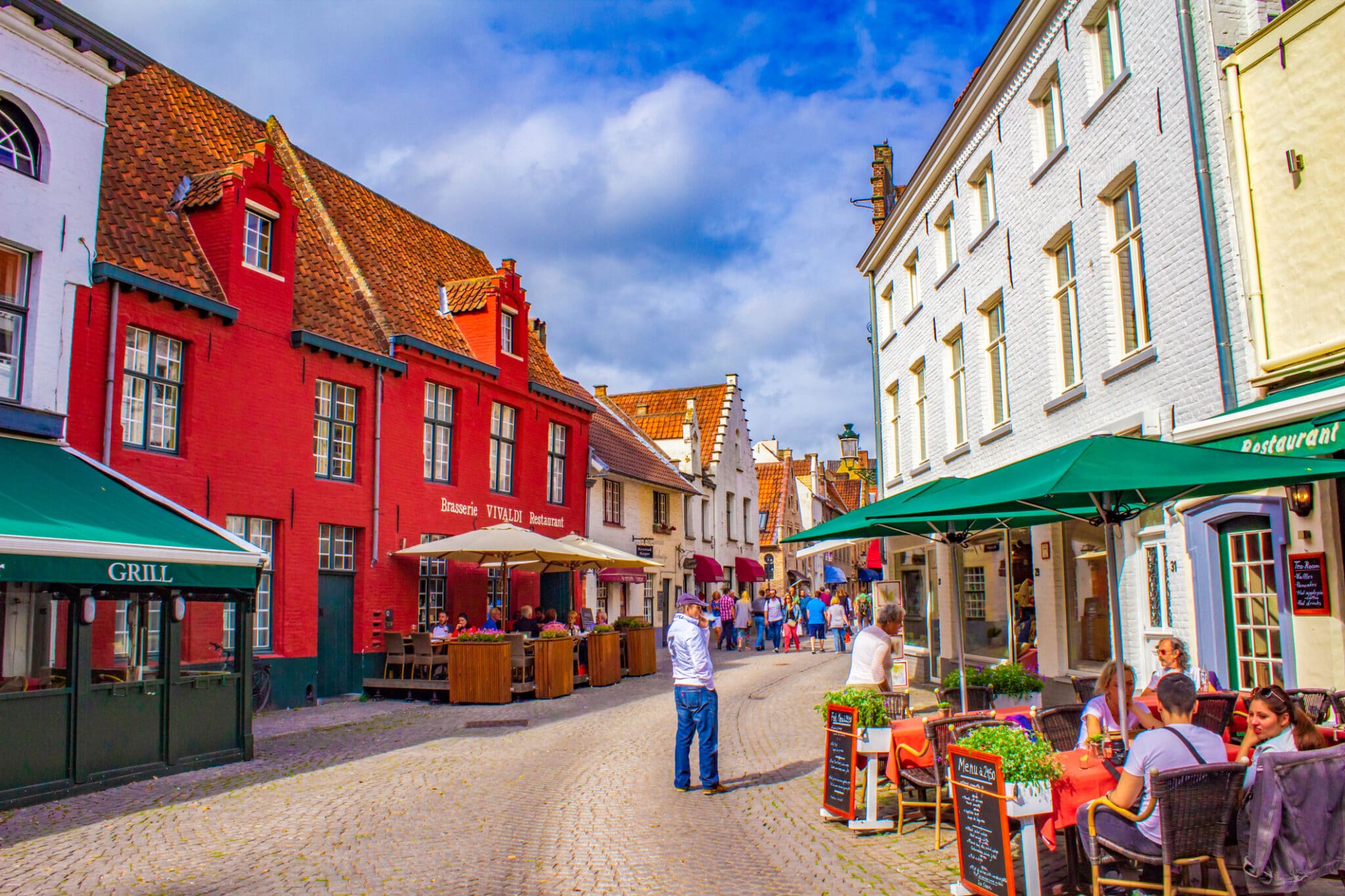
Guided tours on foot or by carriage are available and strongly recommended to fully appreciate the historical and cultural richness of Bruges. Experienced guides can unveil hidden secrets and interesting anecdotes that enrich the experience, making the visit not just a tour, but a living story.
In the centre of the urban fabric of Bruges lies the Market Square (Markt)the true hub of city life. This spacious square is surrounded by impressive historical buildings and dominated by the majestic Belfort Tower83 metres high. Climbing the tower's 366 steps may seem like a feat, but the reward for reaching the top is a breathtaking panoramic view over the city and its surroundings, a view that extends as far as the sea on a clear day.
The square has always been a place of great importance for Bruges, serving as the central market since the Middle Ages. Even today, weekly markets animate the square, offering local products and Belgian specialities, from tasty cheeses to delicious handmade chocolate. Throughout the year, the square is also transformed to host various cultural eventsfestivals and celebrations that attract both locals and tourists, helping to keep alive the city's tradition as a centre of community and cultural life.
The Belfort is not just an observation point; inside, a small exhibition tells the story of the tower and its importance to the city of Bruges. Discovering how this structure has been used over the centuries, from sighting and defence functions to bell tower, is an integral part of the visiting experience.
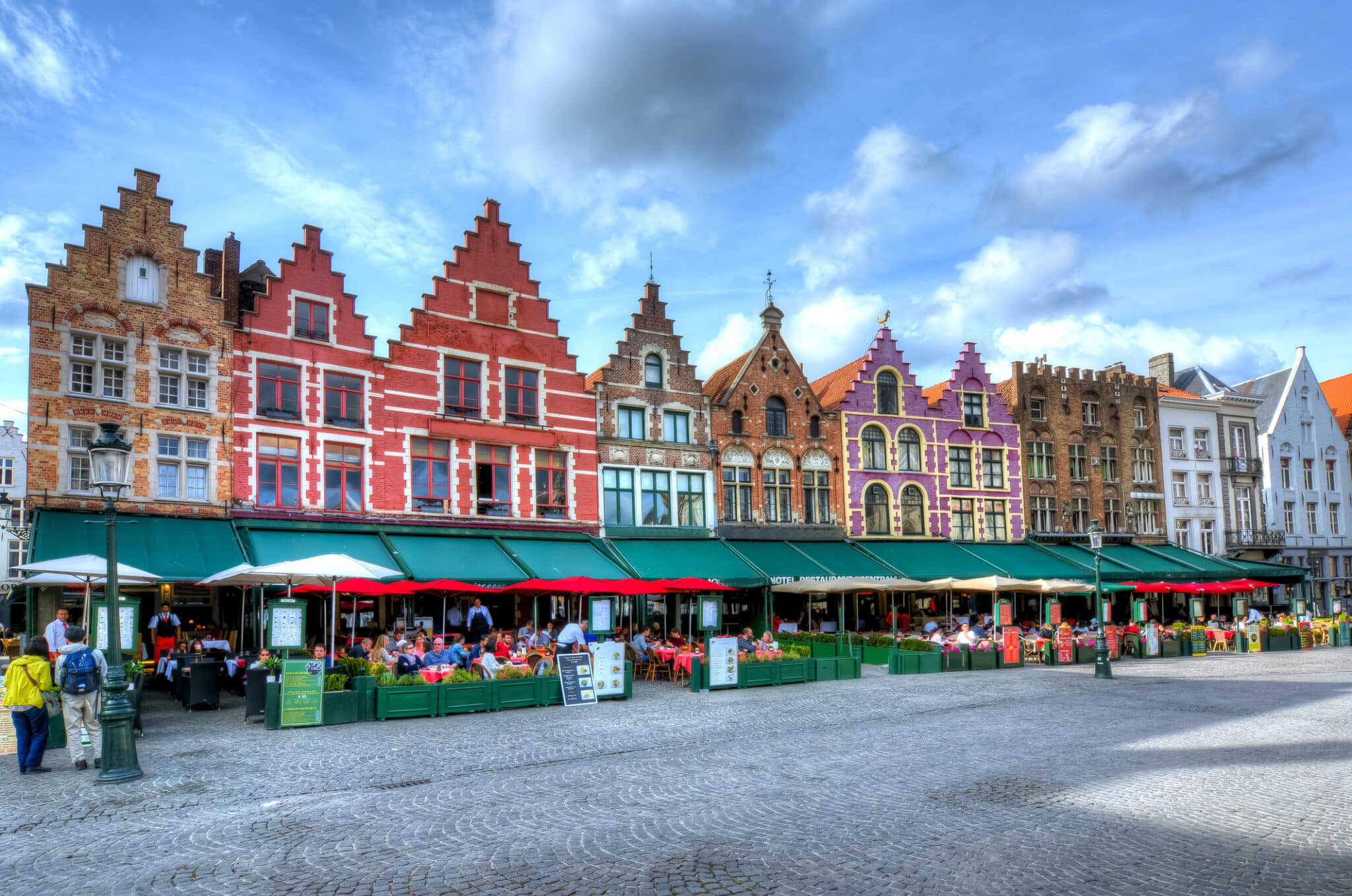
Exploring the historic centre of Bruges and the Market Square offers a deeper understanding of the city's historical and cultural heritage, making each visit a unique and memorable experience.
I canals of Bruges are often compared to Italy's Venice, so much so that they are nicknamed the 'Venice of the North'. These historic canals offer a completely different and enchantingly tranquil view of the city, turning your gaze away from the crowded cobbled streets to discover a serene world flowing with water. A boat tour along the canals is not simply a route, but a journey through time, where the history of Bruges unfolds before visitors' eyes.
Le excursions boat tours along the canals allow one to see Bruges from a unique perspective, showing hidden and less accessible corners of the city that would not otherwise be visible. These tours are enhanced by expert guides narrating historical and cultural anecdotes, making each bend in the canal a living lesson in medieval history. The tranquillity of the waters beautifully reflects the well-preserved façades of historic houses and buildings, offering a picturesque experience that remains etched in the visitor's memory.
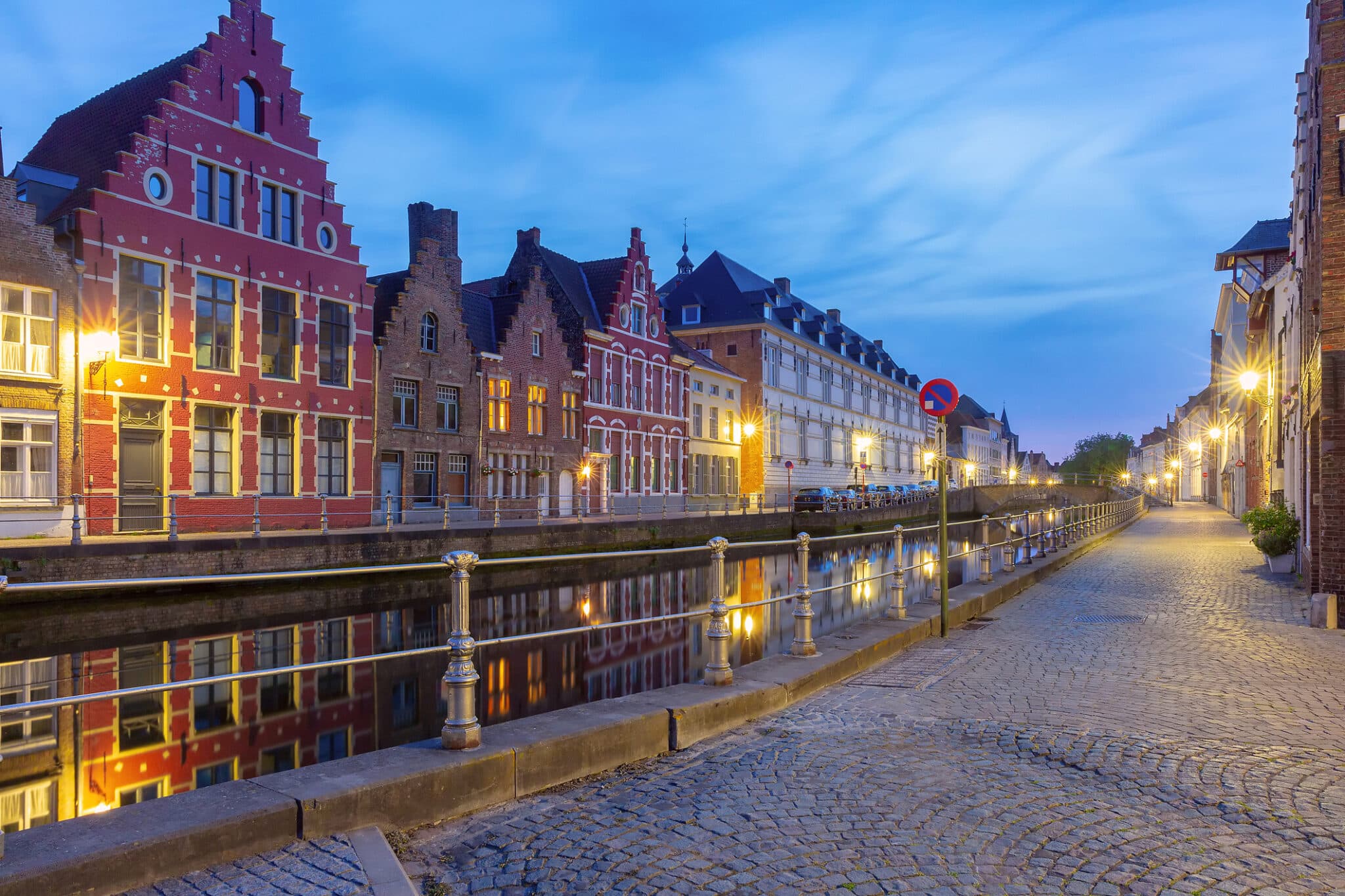
Navigating the canals of Bruges is also an opportunity to appreciate the medieval engineering and urban planning that allowed this city to prosper as a trading port. The deliberate design of the canals, which once served to transport goods and people, today serves to preserve the historical heritage and enhance the tourism. There is no shortage of small cafés and restaurants along the canals offering relaxing stops with a view of the water, where you can enjoy local dishes in a timeless atmosphere.
La Basilica of the Holy Blood is one of the architectural and spiritual gems of Bruges. This sacred place, dating back to the 12th century, is located in the enchanting Burg Square, adjacent to the better known Market Square. The basilica is mainly famous for housing one of the most venerated relics of Christianity: the Holy Blood of Christ, said to have been brought to Bruges after the Second Crusade by Diederik van de Elzas, Count of Flanders.
The interior of the basilica is a true masterpiece of religious art, with lively mosaics e sacred works of art that adorn every surface. Visitors are often impressed by the rich interior decoration that includes stained glass windows, elaborate sculptures and ancient paintings telling biblical and local stories. The uniqueness of the basilica lies not only in its beauty or historical importance, but in the deep sense of peace and spirituality it offers to those who enter its walls.
Every year, thousands of pilgrims and tourists visit the basilica to venerate the relic and admire the architecture. The basilica also organises the annual procession of the Holy Bloodan event in which citizens and visitors alike participate, re-enacting the historic arrival of the relic in the city. This event is not only a moment of great religious devotion but also an opportunity to see Bruges celebrate its history in a lively and colourful way.
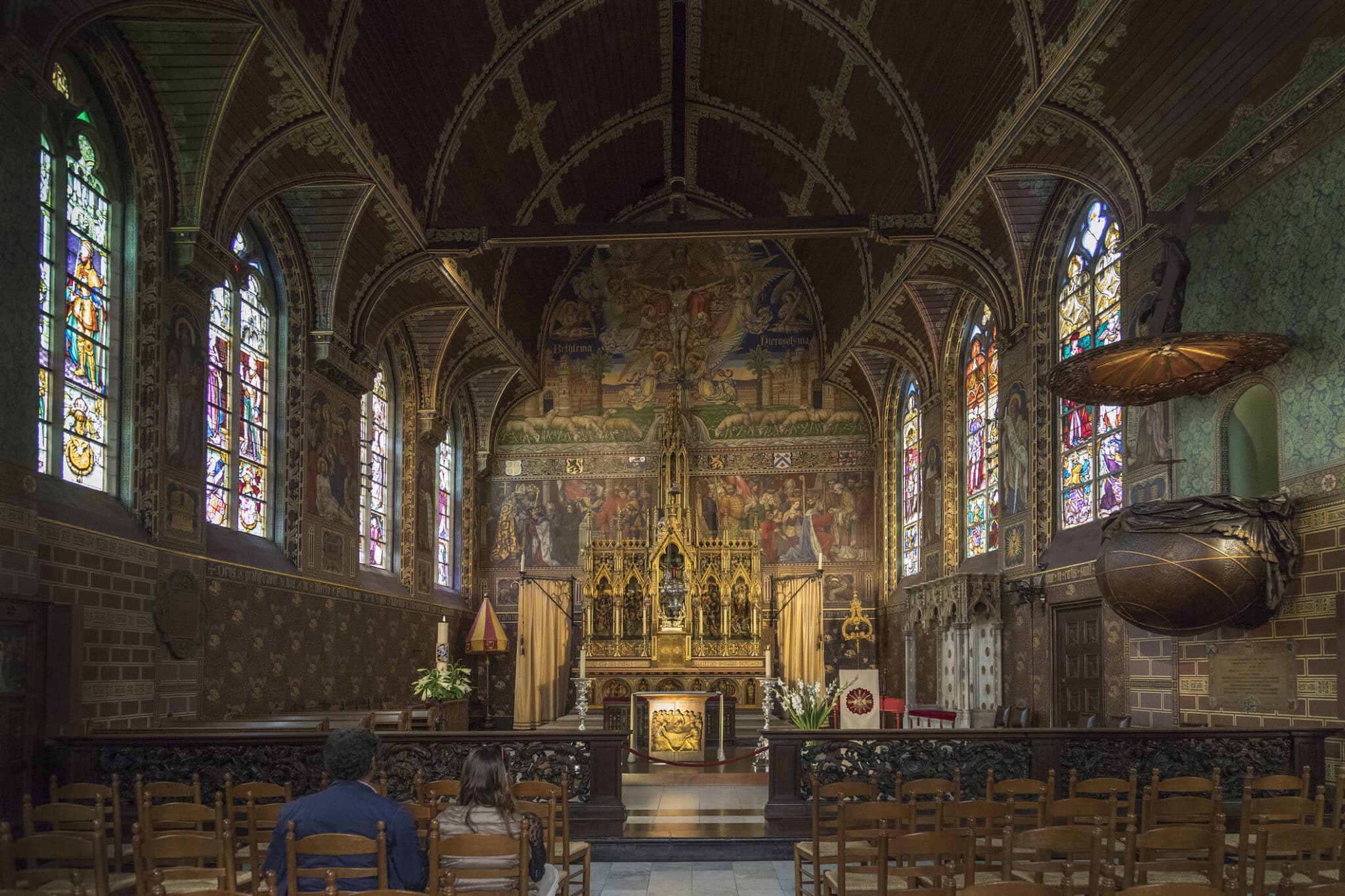
Exploring the canals of Bruges or visiting the Basilica of the Holy Blood, visitors can fully immerse themselves in the history, art and culture that make this Belgian city an unforgettable place on the European scene.
The Groeninge Museum is an essential institution for anyone interested in the art and cultural history of Belgium, particularly the Flemish region. Located in the heart of Bruges, this museum is distinguished by its exceptional collection of works of art ranging from the Middle Ages to modern times. The collection is particularly renowned for its emphasis on the Flemish Primitive Paintersa group of artists who revolutionised painting in northern Europe during the Renaissance.
Among the museum's most illustrious pieces are works by Jan van Eyck e Hieronymus Boschtwo masters whose influence extends far beyond the boundaries of Flemish painting. Van Eyck, known for his extraordinary capacity for detail and innovative use of colour, is represented in the museum by some of his most significant works, allowing visitors to appreciate his meticulous technique and the emotional depth of his subjects at close quarters. Likewise, Bosch's enigmatic and often surreal creations offer a unique insight into the artistic trends and cultural preoccupations of his time.
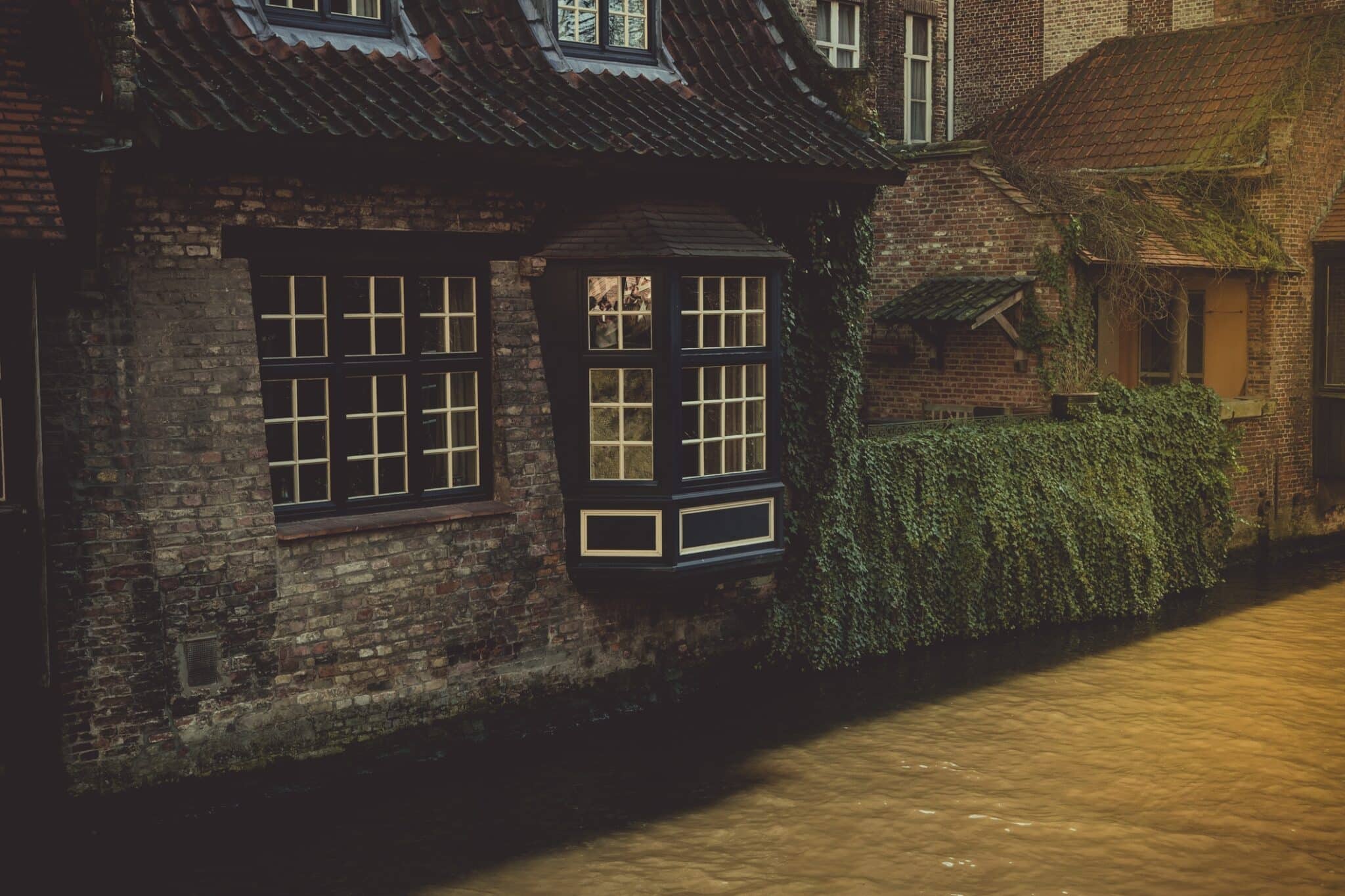
The Groeninge Museum does not only exhibit works of art; it also serves as an educational centre, with frequent temporary exhibitions, lectures and workshops that help to interpret and appreciate the complex stories behind these works of art. A visit to this museum is not simply an opportunity to see paintings, but a true immersion in art history, leaving room for personal reflection and active learning.
Bruges is not only famous for its art and architecture but also for its long tradition in chocolate production. The Chocolate Museum celebrates this delightful part of the city's cultural heritage, offering visitors the chance to explore the history, art and science of chocolate production. Located in a picturesque corner of the city, the museum attracts gourmands and history buffs alike.
The exhibition guides visitors through various stages of chocolate production, from cocoa cultivation in tropical countries to refining and production in Belgian factories. Through live demonstrations, guests can see first-hand how master chocolatiers transform simple cocoa beans into luxurious and artistically packaged chocolate confections. In addition to learning, visitors can taste different types of chocolate, each with its own distinct flavour notes, offering a complete sensory experience.
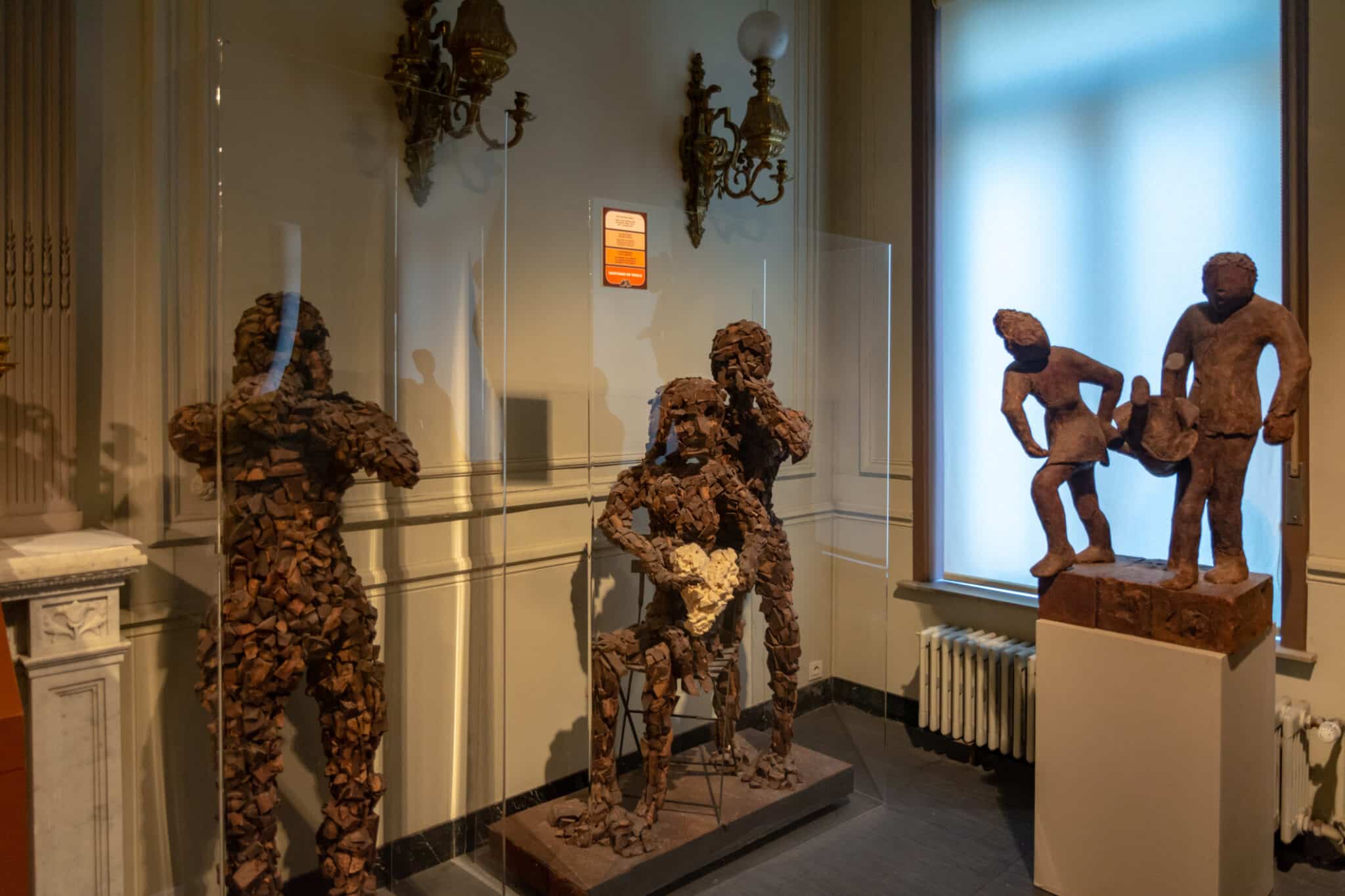
The museum is also committed to educating visitors about sustainable chocolate production methods and the importance of fair trade in the cocoa industry. This focus on ethics adds an extra layer of depth to the visit, allowing visitors to enjoy their chocolate not only as a culinary treat, but also as a product that supports fair and sustainable practices.
The Minnewater Lake, affectionately known as the 'Lake of Love', is one of the most enchanting and romantic places in Bruges. This picturesque lake and its surrounding park serve as a peaceful retreat away from the hustle and bustle of the city's busiest streets, offering a peaceful atmosphere and a breathtaking landscape that seems straight out of a fairy tale.
Local legend has it that the lake is a place of luck for lovers, and that walking along its shores or crossing its bridges can seal love forever. This myth contributes to the lake's romantic charm, making it a favourite destination for couples of all ages. The lake and its surroundings are often populated by lovers walking hand in hand, enjoying quiet moments and idyllic views of calm waters and lush trees.
The park around the Minnewater is well maintained, with paths inviting visitors to explore further. During spring and summer, the park is transformed with a profusion of colourful flowers that add an extra layer of beauty to the landscape. In addition, the park is an ideal habitat for several species of birds, making the lake an excellent place for birdwatchers as well.
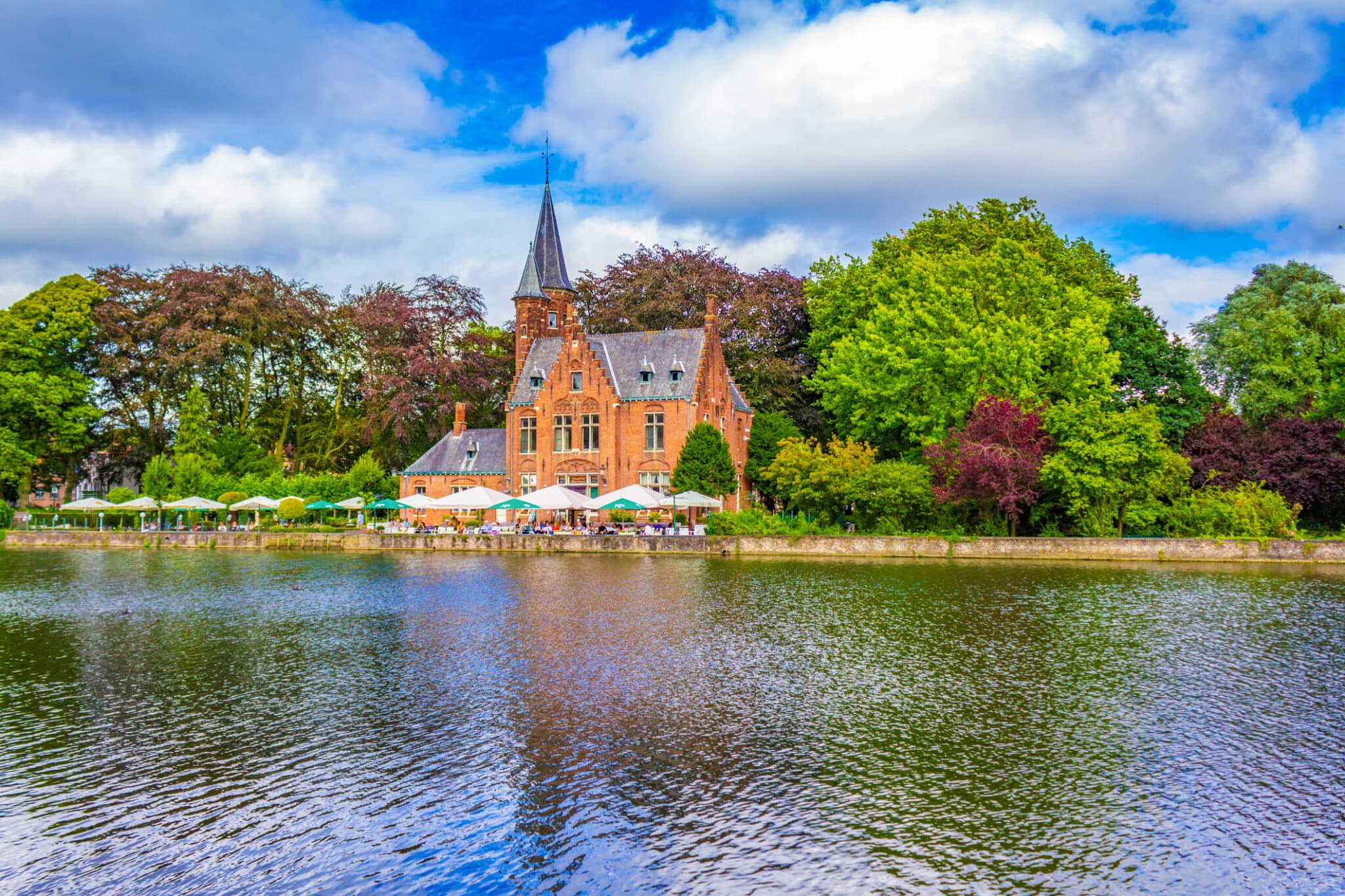
The Minnewater Lake is also a popular place for picnics, reading or simply to sit on one of the many benches and be lulled by the tranquillity of the water. The contrast between the calmness of the lake and the energy of the city makes every visit to Minnewater a refreshing and relaxing experience, ideal for those seeking a break from urban life.
La Church of Our Lady in Bruges is not only one of the city's most impressive religious buildings, but is also an architectural masterpiece that dominates the skyline with its brick tower, the tallest in Belgium. This tower, visible from many parts of the city, serves as a historical and cultural landmark for residents and visitors alike.
Beyond its impressive Gothic façade, the church is universally renowned for housing one of the few sculptures of Michelangelo present outside Italy: the Madonna and Child. This work, created in 1504, is remarkable for its beauty and expressiveness, attracting admirers from all over the world. The statue not only represents a significant example of Michelangelo's artistic genius but is also a valuable piece of artistic heritage that Bruges is honoured to preserve.
The interior of the Church of Our Lady is equally majestic, with elaborate altars, colourful stained glass windows and an array of sacred artwork enriching every corner. The nave and chancel of the church display an architectural sophistication that enchants visitors, highlighting the historical and spiritual richness of the place.
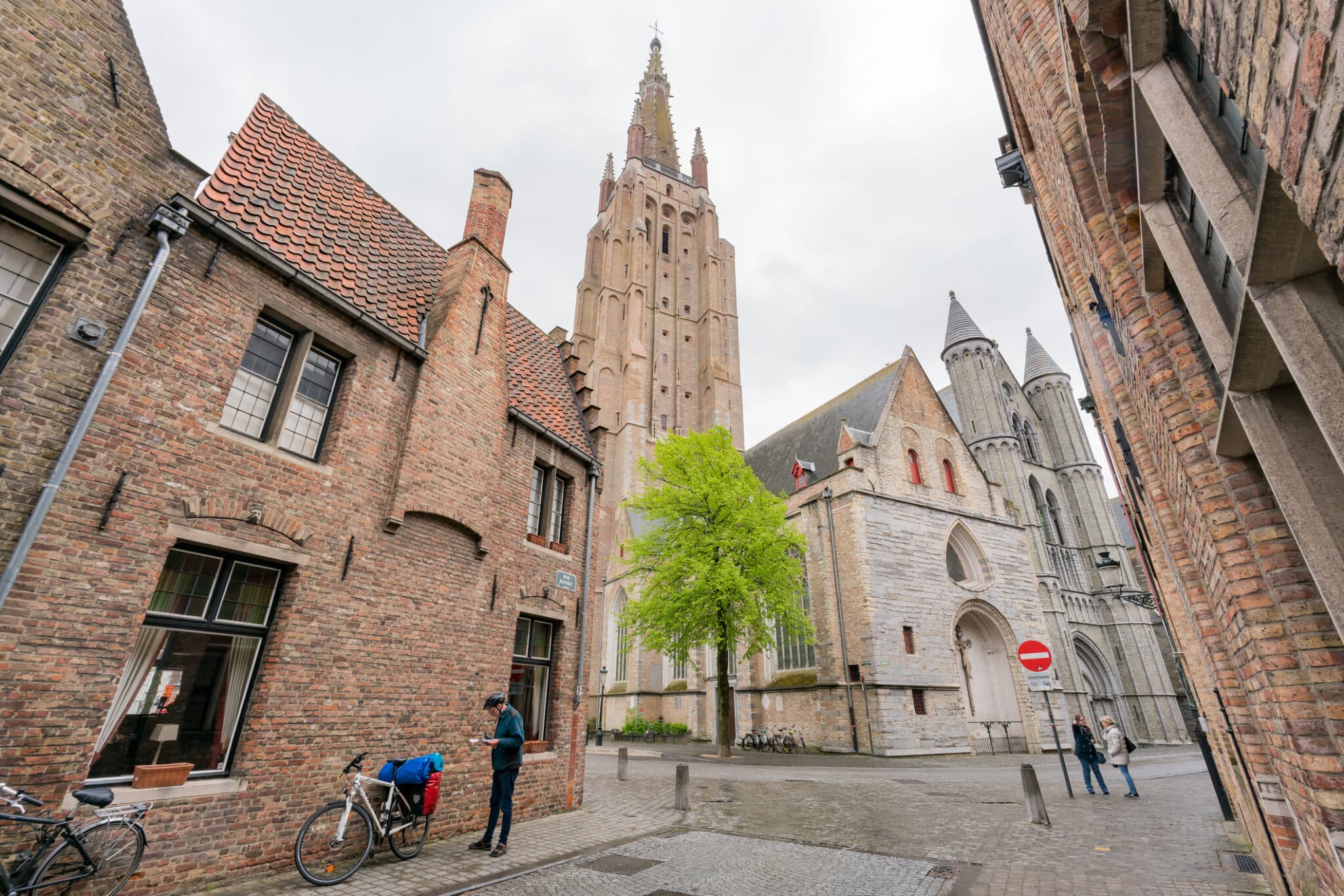
The church is not only a place of worship but also a site of great cultural and historical interest, offering visitors a deep immersion in art, architecture and spirituality. The presence of Michelangelo's sculpture, in particular, elevates the Church of Our Lady to a monument of international interest, making every visit a memorable and meaningful experience.
The Beguinage of Bruges, fondato nel 1245, rappresenta una parte significativa della storia sociale e religiosa della città. Questo luogo unico fu originariamente istituito come rifugio per le beghine, donne laiche che sceglievano di vivere in comunità religiose ma senza pronunciare voti monastici permanenti. Queste donne, spesso vedove o single che non desideravano sposarsi o entrare in un convento, trovavano nel beghinaggio un luogo di accoglienza e spiritualità.
Oggi, il Beghinaggio di Bruges è considerato un oasi di pace, lontano dal trambusto della vita cittadina moderna. Con le sue belle case tradizionali, circondate da mura bianche e tranquilli giardini, il beghinaggio offre ai visitatori un assaggio della vita di una volta. Camminare tra questi edifici storici e i vialetti silenziosi è come fare un passo indietro nel tempo, in un’era di semplicità e meditazione.
Il piccolo museo all’interno del beghinaggio racconta la vita quotidiana delle beghine, mostrando oggetti di uso quotidiano, abiti tradizionali e arredi che offrono uno sguardo intimo su come queste donne hanno vissuto e lavorato in comunità per secoli. Il museo non solo conserva la memoria delle beghine ma serve anche da ponte culturale tra il passato e i visitatori contemporanei, sottolineando l’importanza della conservazione e del rispetto delle tradizioni.
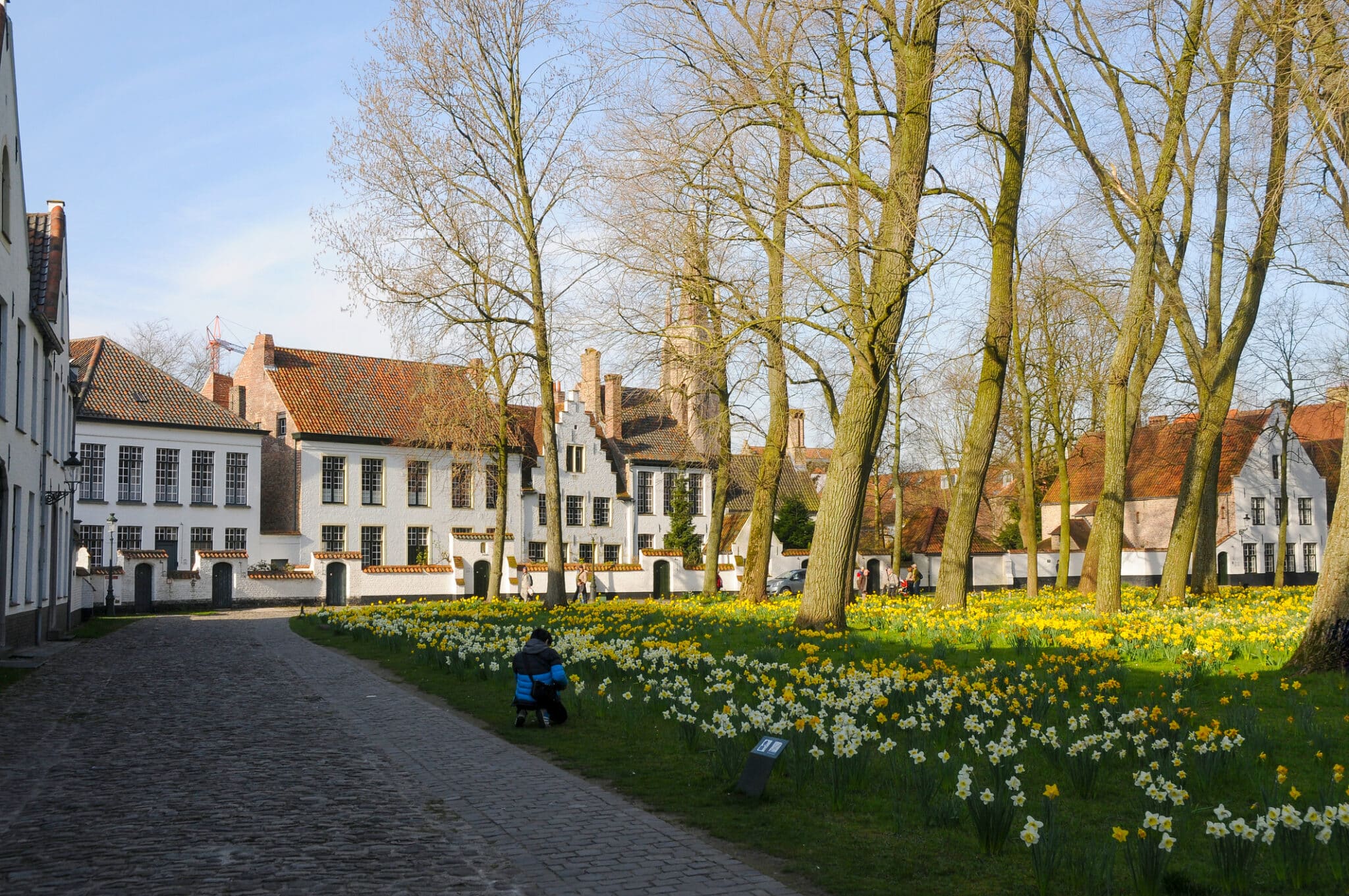
Visitarlo fornisce una comprensione più profonda del contesto sociale e religioso di Bruges e offre un momento di riflessione sulla vita comunitaria che contrasta fortemente con il ritmo individuale e frenetico dei tempi moderni. Il Beghinaggio non è solo un sito storico, ma un luogo di serenità e ispirazione spirituale che continua a influenzare coloro che attraversano i suoi cancelli.
The Sint-Janshospitaal di Bruges è uno degli ospedali medievali più antichi d’Europa, un monumento che testimonia la lunga storia di assistenza medica e ospitalità della città. Fondato nel XII secolo, l’ospedale ha funzionato come istituzione di cura per i malati e i poveri per più di 800 anni prima di essere trasformato in museo.
Oggi, i visitatori possono esplorare questo antico edificio e scoprire non solo la storia della medicina medievale ma anche ammirare una notevole collezione di opere d’arte. Tra i tesori del museo spiccano le opere di Hans Memling, uno dei più grandi pittori fiamminghi del Rinascimento. Le sue opere, create originariamente per l’ospedale, includono il famoso Triptico di San Giovanni, che continua a stupire per la sua bellezza e complessità dettagliata.
Il museo offre anche un’approfondita esplorazione delle pratiche mediche del passato, con esposizioni che includono strumenti chirurgici antichi, erbe medicinali e ricette che offrono uno sguardo su come la malattia e la cura erano percepite e trattate nel Medioevo. Questa prospettiva storica non solo arricchisce la comprensione dei metodi medici moderni ma permette anche di apprezzare il lungo cammino compiuto nel campo della salute.
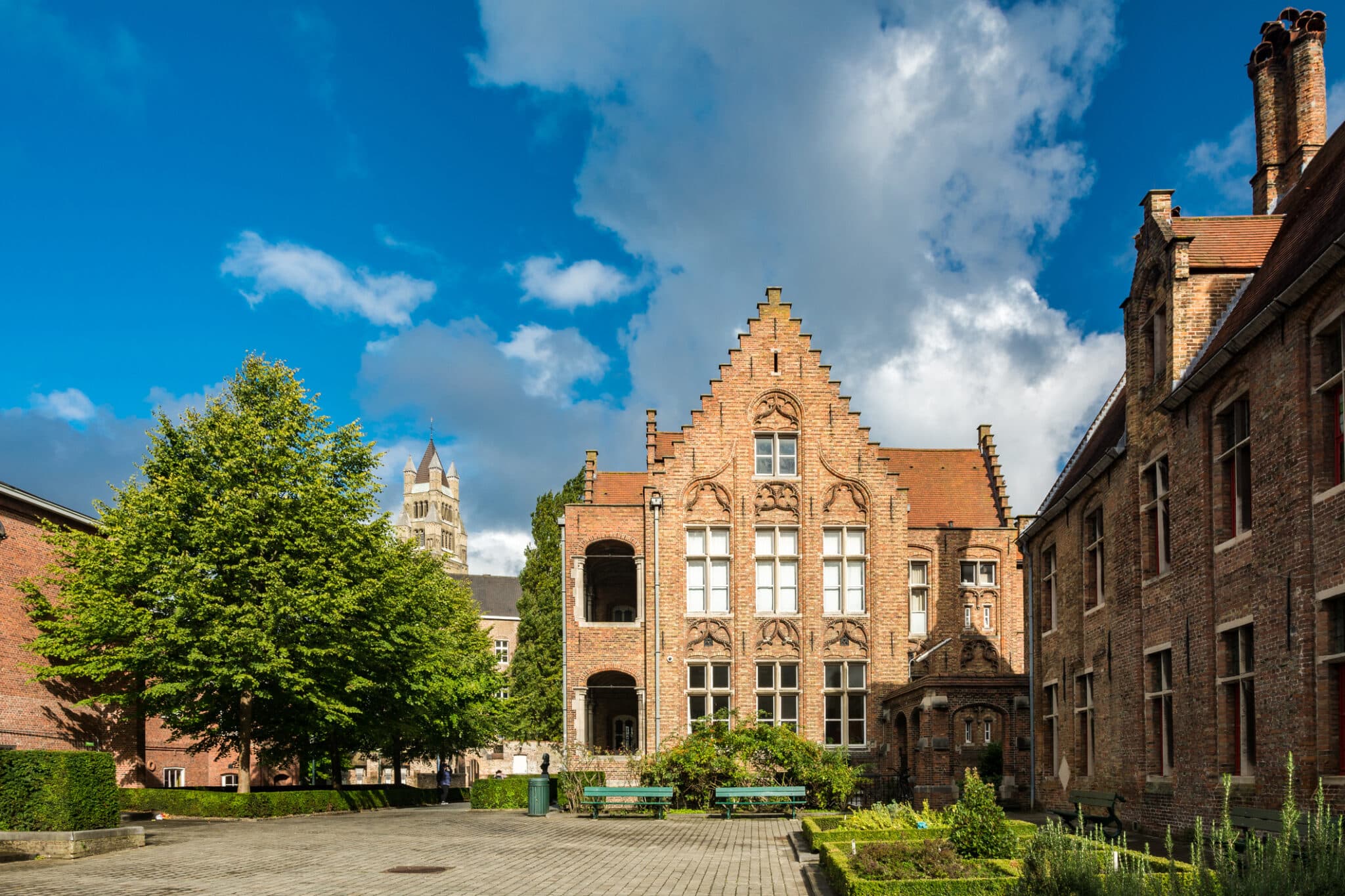
Visitarlo è un’esperienza educativa che collega l’arte, la storia e la scienza in un unico contesto affascinante, mostrando come l’assistenza sanitaria si sia intrecciata con la vita quotidiana e spirituale della comunità di Bruges nei secoli. Ogni angolo del Sint-Janshospitaal parla di una Bruges che ha curato sia i corpi sia le anime, rendendolo un sito di inestimabile valore storico e culturale.
The Museo della Patata Fritta, situato nel cuore di Bruges, offre un’esperienza unica e affascinante che celebra una delle icone culinarie del Belgio: la patatina fritta. Questo museo non solo racconta la storia della patatina fritta belga, ma esplora anche l’arte e la scienza dietro la cottura della patata perfetta, rendendolo un luogo di grande interesse sia per i foodies che per chi è curioso di scoprire di più su questo amato snack.
All’interno del museo, i visitatori possono percorrere una serie di esibizioni che illustrano la storia delle patatine fritte, dalla loro origine umile come cibo per i poveri fino a diventare un fenomeno globale. Le mostre dettagliano come le diverse varietà di patate influenzano il sapore e la consistenza delle fritture, e come le tecniche di taglio e le temperature dell’olio possono trasformare un semplice tubero in un croccante piacere dorato.
Una parte interessante del museo è dedicata agli aspetti scientifici della frittura, con spiegazioni su come l’amido e gli zuccheri reagiscono con l’olio bollente per creare quella croccante esteriorità che rende le patatine fritte così irresistibili. I visitatori possono anche imparare su come i miglioramenti tecnologici hanno influenzato la produzione di patatine fritte, dalla frittura manuale ai moderni sistemi automatizzati.
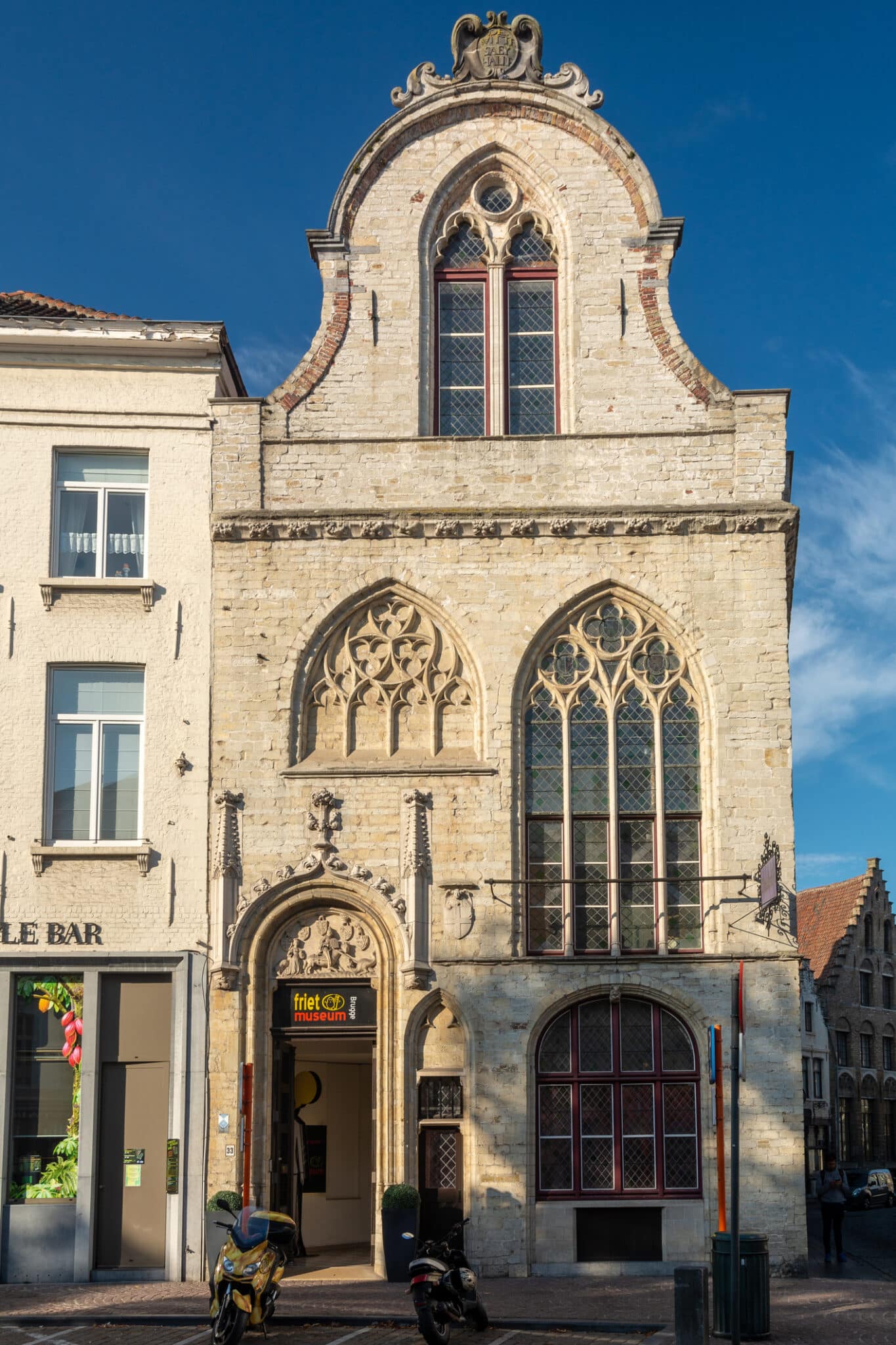
Il Museo della Patata Fritta non solo educa, ma offre anche degustazioni, permettendo ai visitatori di sperimentare diverse varietà di patatine fritte e di scoprire salse tradizionali e moderne che esaltano il loro sapore. Questa interazione rende la visita al museo non solo informativa ma anche estremamente gustosa.
La Jerusalem Church di Bruges è un esempio straordinario di architettura ecclesiastica con un’identità unica. Costruita nel XV secolo da una ricca famiglia mercantile, la famiglia Adornes, la chiesa riflette l’influenza dei loro travel in Terra Santa, il che spiega il suo design insolito e gli elementi che emulano il Santo Sepolcro di Gerusalemme.
L’interno della chiesa è riccamente decorato, con altari elaborati, vetrate colorate e un’abbondanza di arte sacra che cattura immediatamente l’attenzione dei visitatori. Oltre alla sua bellezza visiva, la chiesa è nota per la sua atmosfera mistica e la sensazione di tranquillità che offre a chi entra nelle sue porte.
Uno degli elementi più notevoli di Jerusalem Church è la cripta, dove sono sepolti i membri della famiglia Adornes. La cripta, insieme alla replica del Santo Sepolcro, aggiunge un profondo senso di storia e spiritualità al luogo, facendo sentire i visitatori come se avessero fatto un piccolo pellegrinaggio.
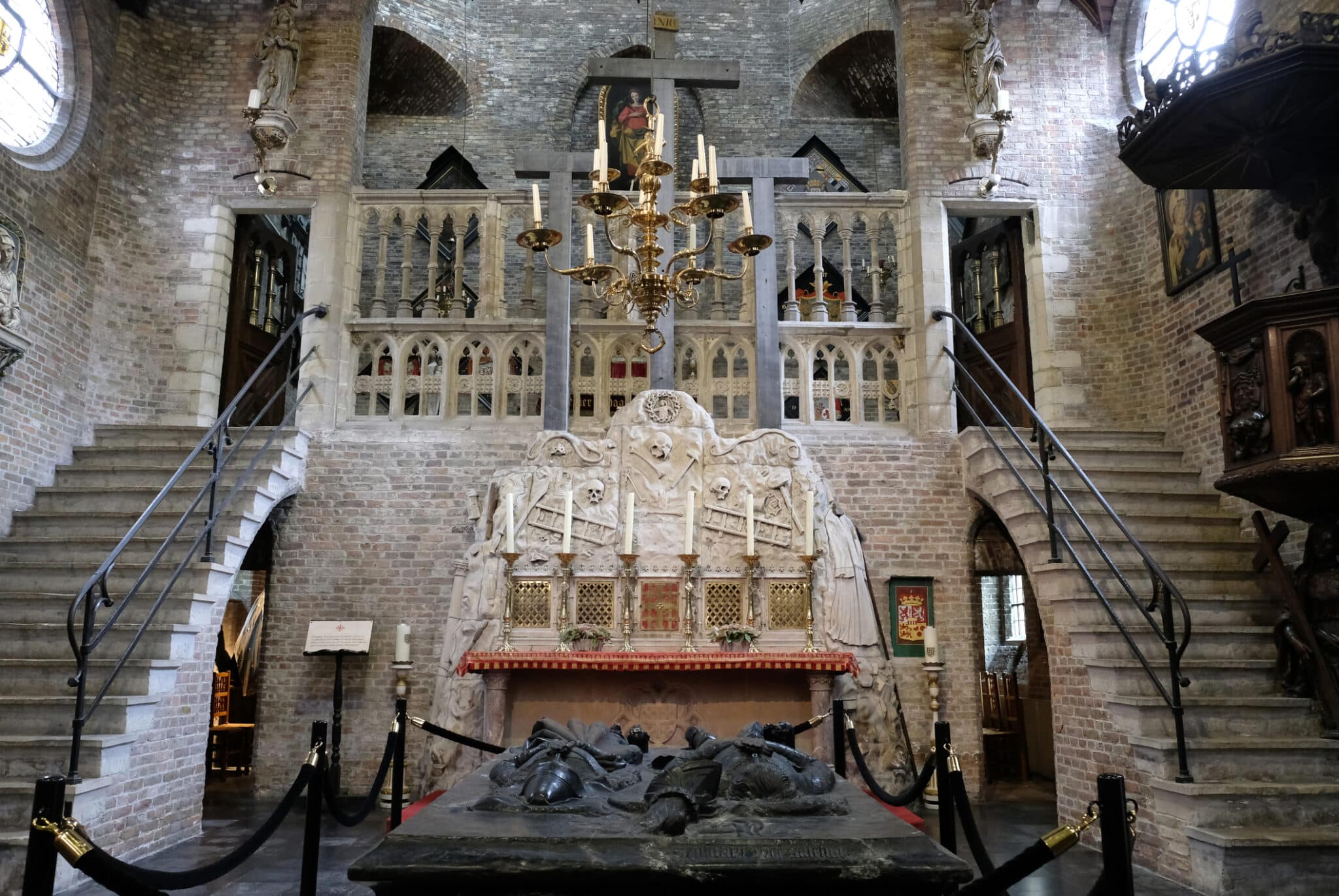
La chiesa non è solo un luogo di culto, ma anche un museo che conserva e mostra reliquie e oggetti d’arte che raccontano la storia della famiglia Adornes e della loro influenza sulla città. Visitarla offre una prospettiva unica sulla fede, l’arte e la storia di Bruges, rendendola una tappa imprescindibile per chiunque voglia comprendere pienamente il patrimonio culturale della città.
Con questa guida a Bruges, siete pronti a scoprire il fascino unico di una delle città più belle e storiche del Belgio. Portate con voi una macchina fotografica e preparatevi a creare ricordi indimenticabili tra le meraviglie di Bruges.
We are a young Web Agency with more than 10 years of experience, we love travelling and discovering new places, that is why we write every day on Italia Delight our travel site.

Italia Delight is your definitive guide to Italian restaurants, offering a comprehensive directory and web marketing services to enhance every dining experience. Discover, taste and connect with Italian tradition.
To provide the best experiences, we and our partners use technologies like cookies to store and/or access device information. Consenting to these technologies will allow us and our partners to process personal data such as browsing behavior or unique IDs on this site and show (non-) personalized ads. Not consenting or withdrawing consent, may adversely affect certain features and functions.
Click below to consent to the above or make granular choices. Your choices will be applied to this site only. You can change your settings at any time, including withdrawing your consent, by using the toggles on the Cookie Policy, or by clicking on the manage consent button at the bottom of the screen.